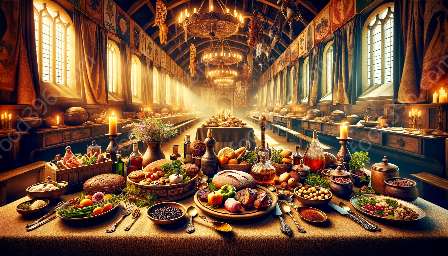Medieval cuisine was a rich tapestry of flavors, ingredients, and cooking techniques that evolved over centuries. This article delves into the history of medieval cuisine, highlighting the innovation and changes that shaped the culinary landscape of that era. From spices and exotic imports to technological advancements in cooking methods, we uncover the fascinating developments that influenced medieval food culture.
The Origins of Medieval Cuisine
Medieval cuisine was heavily influenced by the available resources and culinary traditions of the time. The period spanning from the 5th to the 15th century saw significant changes in food production, trade, and consumption, leading to a diverse culinary landscape across Europe and the Mediterranean.
Key Ingredients and Flavors
One of the defining characteristics of medieval cuisine was the use of spices, herbs, and exotic flavors. These ingredients were often imported from distant lands and played a crucial role in shaping the taste and aroma of medieval dishes. Spices such as cinnamon, cloves, and pepper were highly prized and used in both sweet and savory dishes, adding depth and complexity to the culinary creations of the time.
Furthermore, the availability of locally sourced ingredients like grains, vegetables, and meats also influenced the flavor profiles of medieval cuisine. Staple foods such as wheat, rye, barley, and oats formed the foundation of many dishes, while meats like pork, beef, and poultry were enjoyed by the noble classes and peasantry alike.
Culinary Techniques and Innovations
Medieval cooks and chefs employed a variety of cooking techniques that evolved over time. The use of open hearths, clay ovens, and simple kitchen tools defined the cooking methods of the era. However, technological advancements such as the introduction of enclosed ovens, improved utensils, and the cultivation of new cooking techniques gradually transformed the culinary landscape, allowing for greater creativity and diversity in food preparation.
The Influence of Cultural Exchange
Medieval cuisine was also shaped by cultural exchange and the intermingling of culinary traditions from different regions. The Crusades, for example, brought new flavors and culinary practices to Europe, as returning crusaders introduced exotic spices, fruits, and cooking methods from the Middle East and Asia. Additionally, trade routes and the expansion of empires facilitated the exchange of foodstuffs and culinary knowledge, leading to a rich tapestry of flavors and cooking styles that blended seamlessly in medieval kitchens.
The Evolution of Banquets and Feasting
The medieval period was characterized by lavish banquets and feasts, where food was not only a necessity but also a symbol of power, wealth, and hospitality. The elaborate banquets hosted by royalty and nobility showcased the opulence and extravagance of medieval cuisine, with an abundance of dishes featuring a wide array of ingredients and flavors. The culinary innovations in the realm of banqueting and feasting reflected the social and cultural values of the time, as well as the culinary expertise of medieval chefs and cooks.
Decline and Transformation
As the medieval period drew to a close, various factors such as the Black Death, changing trade dynamics, and the rise of new culinary trends contributed to the decline and transformation of medieval cuisine. The widespread devastation caused by the plague led to significant changes in agricultural practices and food production, affecting the availability of certain ingredients and influencing dietary habits. Additionally, the exploration and colonization of new territories opened up new avenues for culinary exploration, introducing New World ingredients such as tomatoes, potatoes, and chocolate to European kitchens.
Legacy of Medieval Cuisine
Despite the changes and transformations, the legacy of medieval cuisine continues to inspire contemporary culinary practices and traditions. Many modern dishes and cooking techniques have their roots in medieval cuisine, and the influence of medieval flavors and culinary innovations can be seen in the diverse range of cuisines around the world.
From the elaborate banquets of the Middle Ages to the evolution of culinary techniques, the innovation and changes in medieval cuisine have left an indelible mark on food history. Exploring the rich tapestry of flavors, ingredients, and culinary traditions of that era provides valuable insights into the evolution of food and the enduring legacy of medieval cuisine.

